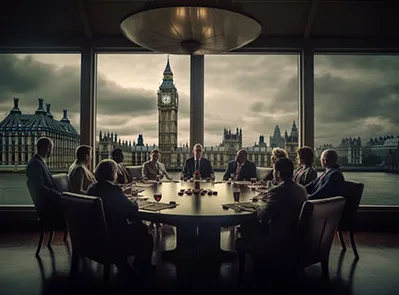The Certified Agile Public Policymaker Training Course
Overview:
Welcome to the Certified Agile Public Policymaker Certification Course. This unique training marries the best vocational courses of public policy and agile methodologies, creating a rigorous policy-making process that nurtures agile servant leaders. It features a comprehensive understanding of public policy, models of public policy, and theories of public policy, whilst offering practical experience in public policy formulation and implementation. This course is designed to help you navigate the matrix of stakeholder mapping techniques, with a stakeholder mapping template being a vital tool. The course combines the intricacies of politics, organizational politics, and office politics to help policymakers comprehend and influence real clear politics.
Target Audience:
- Current and aspiring policymakers
- Public administration officers
- Project managers
- Consultants
- Individuals keen on understanding the dynamics between politics and policymaking
Targeted Organizational Departments:
- Public policy departments
- Strategy and planning departments
- Public relations departments
- Government relations departments
- Communication departments
Targeted Industries:
- Government agencies
- NGOs and social enterprises
- Public Affairs consultancy firms
- Educational institutions offering public policy and politics courses
Course Offerings:
- Understanding of public policy and its definitions
- Skills to leverage audience analysis tools for stakeholder mapping
- Proficiency in the public policy cycle stages
- Insight into types of public policy evaluation
- Exposure to the role of public policy polling in policymaking
- Understanding and application of agile transformation strategy
- Enhanced negotiation skills training
Training Methodology:
This short term course employs an agile methodology to maximize the learning impact within a limited timeframe. With a well-structured training schedule, the training courses will be both engaging and immersive. Participants will make use of our training website, and upon successful completion, receive a training certificate. A blend of case studies, group work, interactive sessions, and feedback using audience analysis tools, will ensure a comprehensive understanding of the topics.
Course Toolbox:
- A detailed stakeholder mapping template
- A guidebook to the policy-making process
- Audience analysis tools for public policy polling and evaluation
- Communication strategy guidebook for effective stakeholder engagement
- Agile 101 resource book for understanding and implementing agile methodologies
Course Agenda:
Day 1: Understanding Public Policy and Agile 101
- Topic 1: Defining Public Policy: What is the Definition of Public Policy
- Topic 2: Agile 101: Fundamentals of Agile Methodology
- Reflection & Review: Interactive discussion on understanding public policy and Agile basics
Day 2: Stakeholder Mapping and Communication
- Topic 1: Stakeholder Mapping Techniques: Leveraging the Stakeholder Mapping Template and Matrix
- Topic 2: Crafting Effective Communication Strategies in Policymaking
- Reflection & Review: Role-play and group exercises for stakeholder mapping and communication
Day 3: Public Policy Cycle and Evaluation
- Topic 1: Public Policy Cycle Stages: An Overview
- Topic 2: Types of Public Policy Evaluation and Role of Public Policy Polling
- Reflection & Review: Case studies analysis on policy cycle stages and evaluation methods
Day 4: Agile Leadership and Transformation
- Topic 1: Agile Leadership for Policymakers: How to be an Agile Servant Leader
- Topic 2: Implementing Agile Transformation Strategy in Policymaking
- Reflection & Review: Interactive review of Agile transformation and leadership concepts
Day 5: Formulation, Implementation and Negotiation
- Topic 1: Public Policy Formulation and Implementation: From Theory to Practice
- Topic 2: Enhancing Your Negotiation Skills: A Critical Tool for Policymakers
- Reflection & Review: Simulation games for policy formulation, implementation, and negotiation
How This Course is Different from Other Public Policymaker Courses:
Unlike typical policy-making courses, our Certified Agile Public Policymaker Certification Course transcends traditional public policy studies. It integrates the principles of agile methodologies into the policy-making process, advocating for adaptability, stakeholder involvement, and iterative progress. The training course also provides a unique focus on the interface of organizational and office politics in policymaking, hence preparing trainees to deal with real-world challenges. This makes it an exceptional offering in the field of vocational education.
credits: 5 credit per day
Course Mode: full-time
Provider: Agile Leaders Training Center
-
Events for this Course!!
-
Cairo 2024-08-04
-
Amsterdam 2024-08-05
-
Istanbul 2024-08-11
-
London 2024-08-19
-
Kuala Lumpur 2024-08-26
-
Barcelona 2024-09-02
-
Madrid 2024-09-02
-
Dubai 2024-09-15
-
Zoom 2024-09-16
-
Dubai 2024-09-23
-
Cairo 2024-09-23
-
Tokyo 2024-09-23
-
Zoom 2024-09-30
-
Casablanca 2024-09-30
-
Baku 2024-10-07
-
Istanbul 2024-10-14
-
Dubai 2024-10-14
-
Doha 2024-10-20
-
Tbilisi 2024-10-28
-
Baku 2024-11-04
Upcoming Events































































